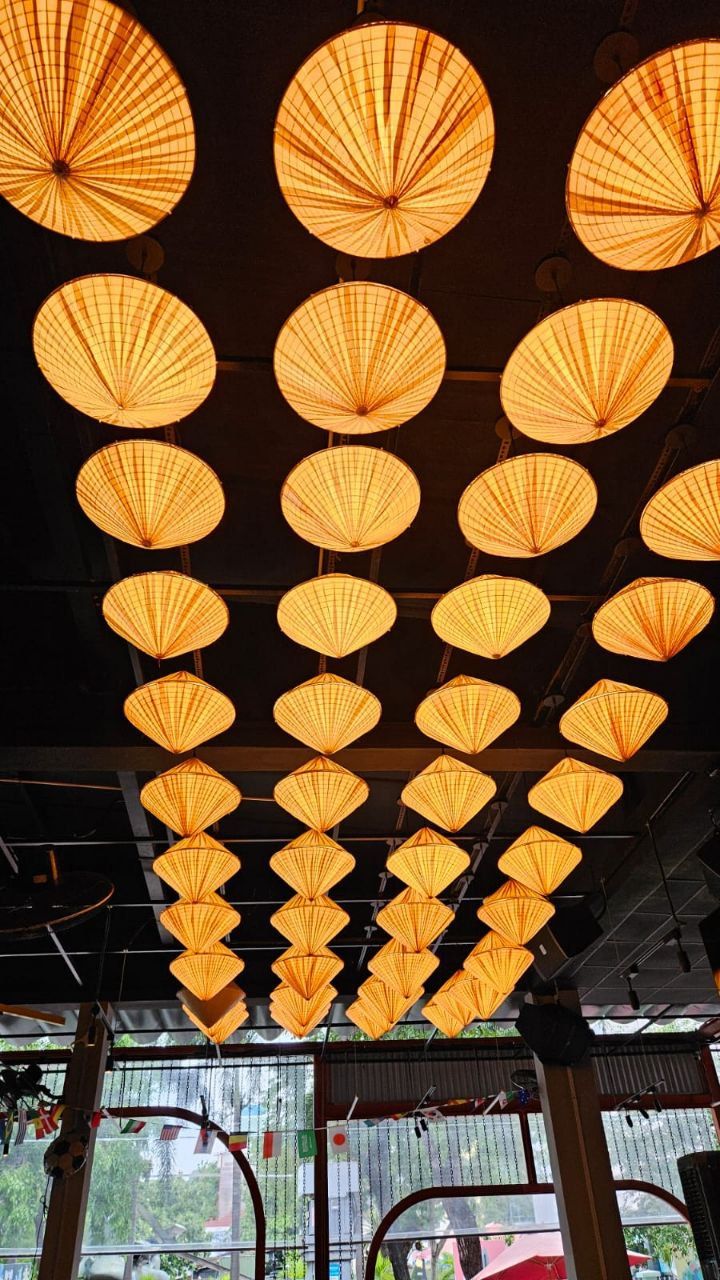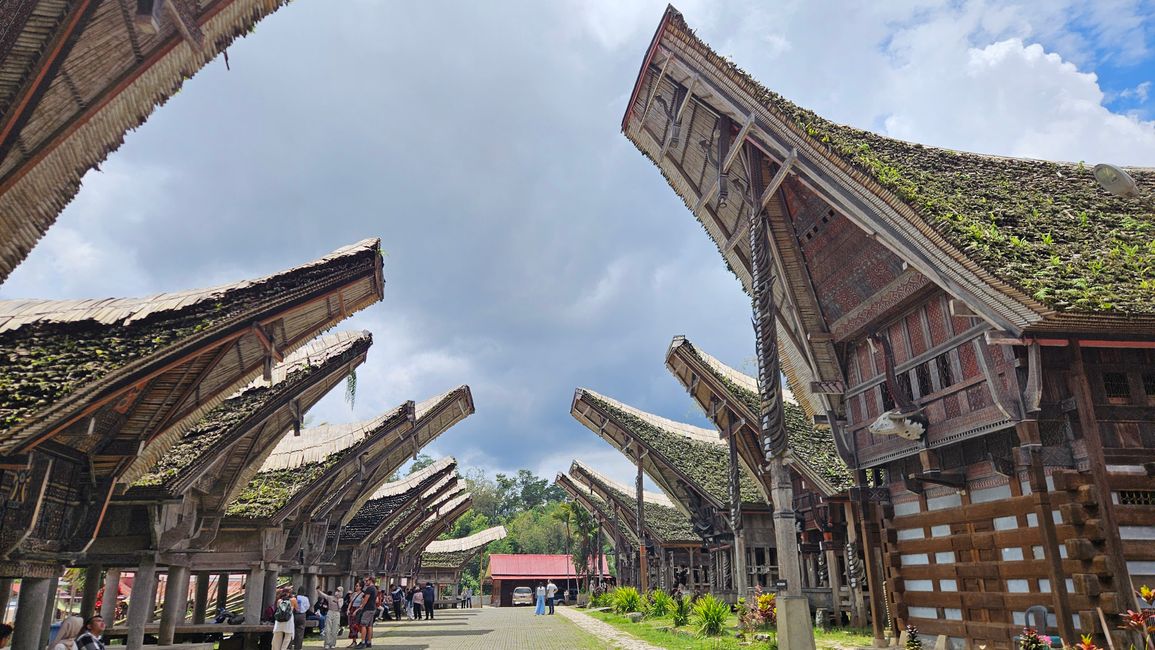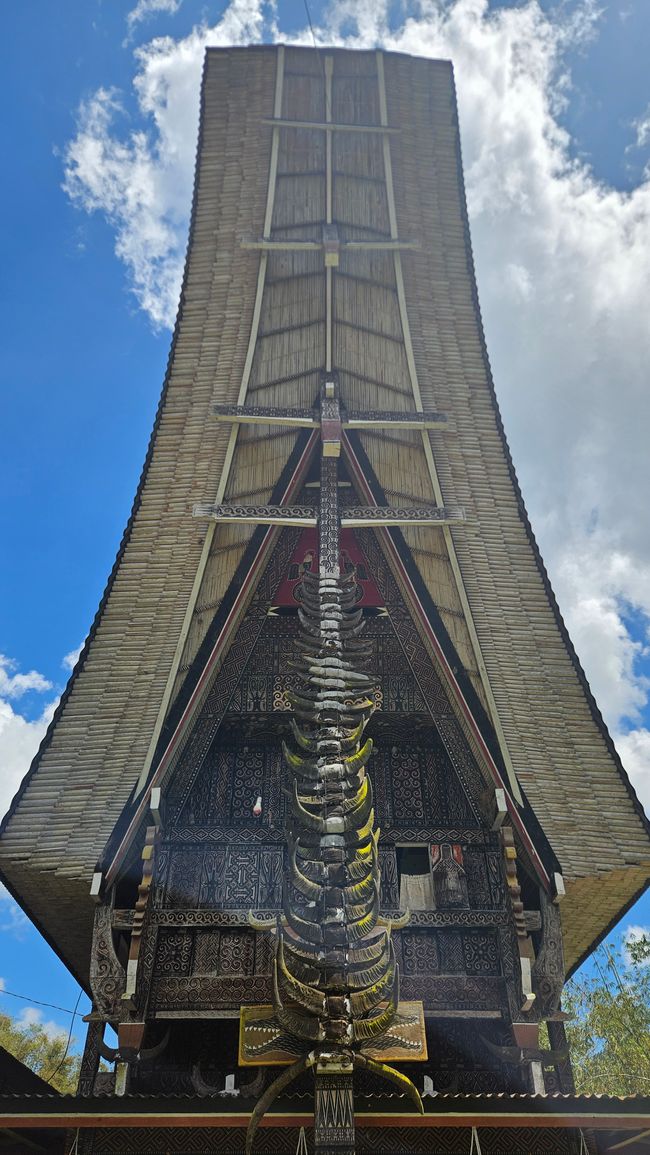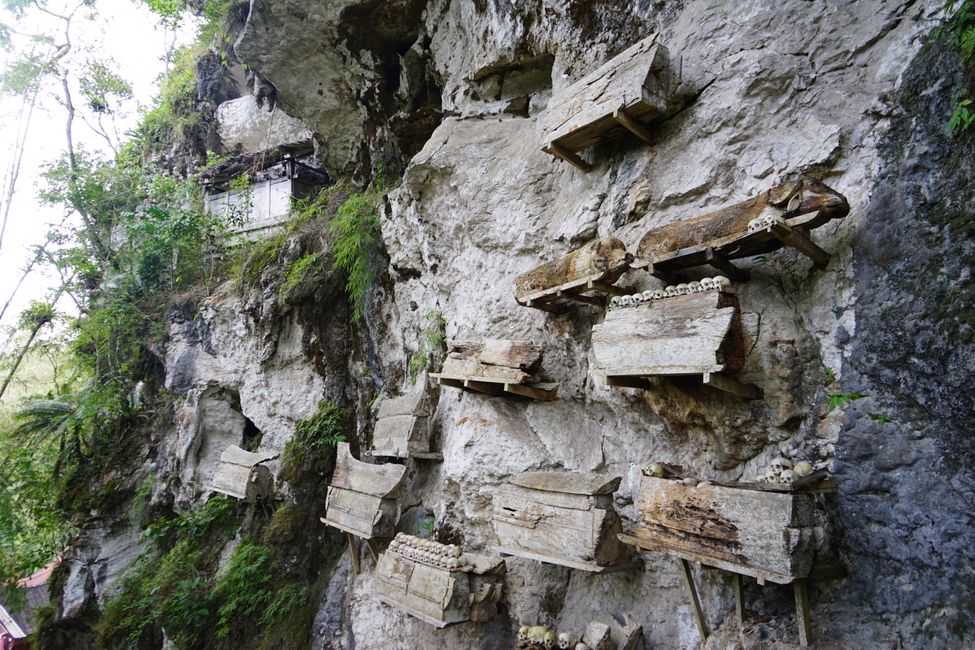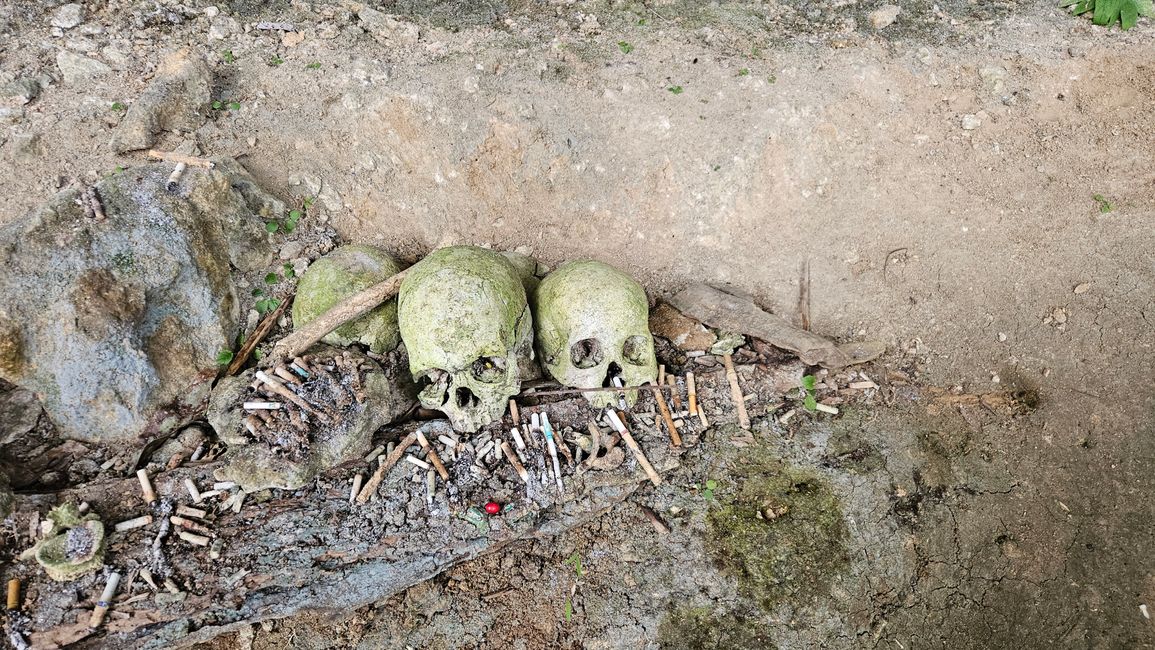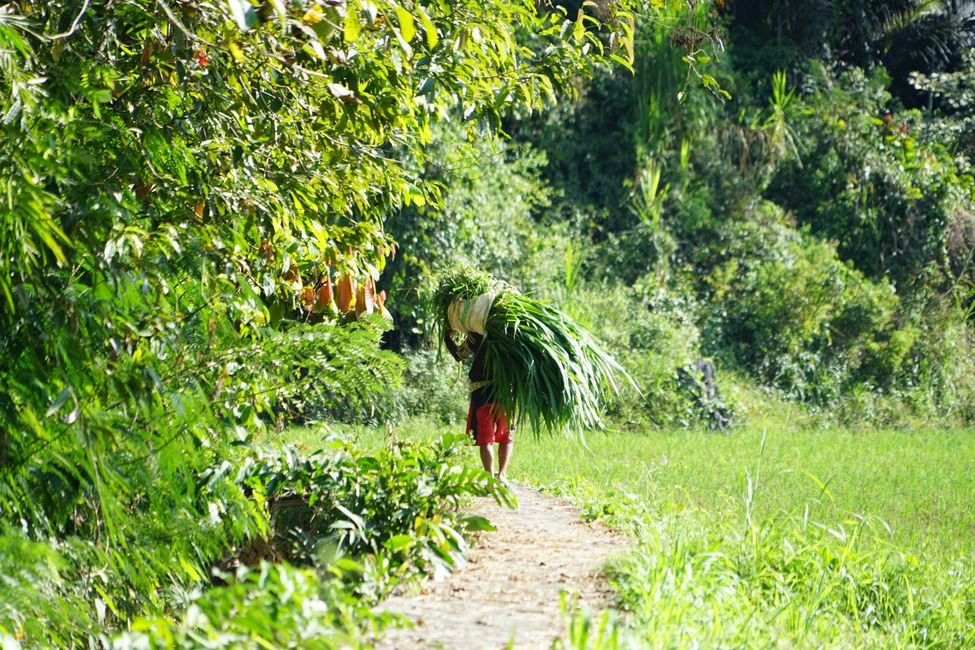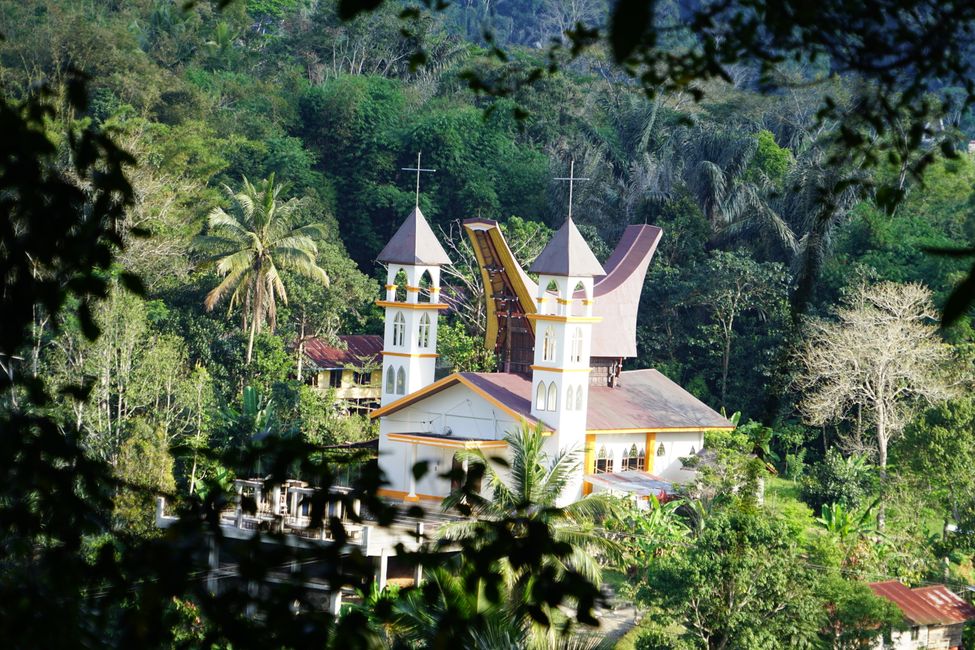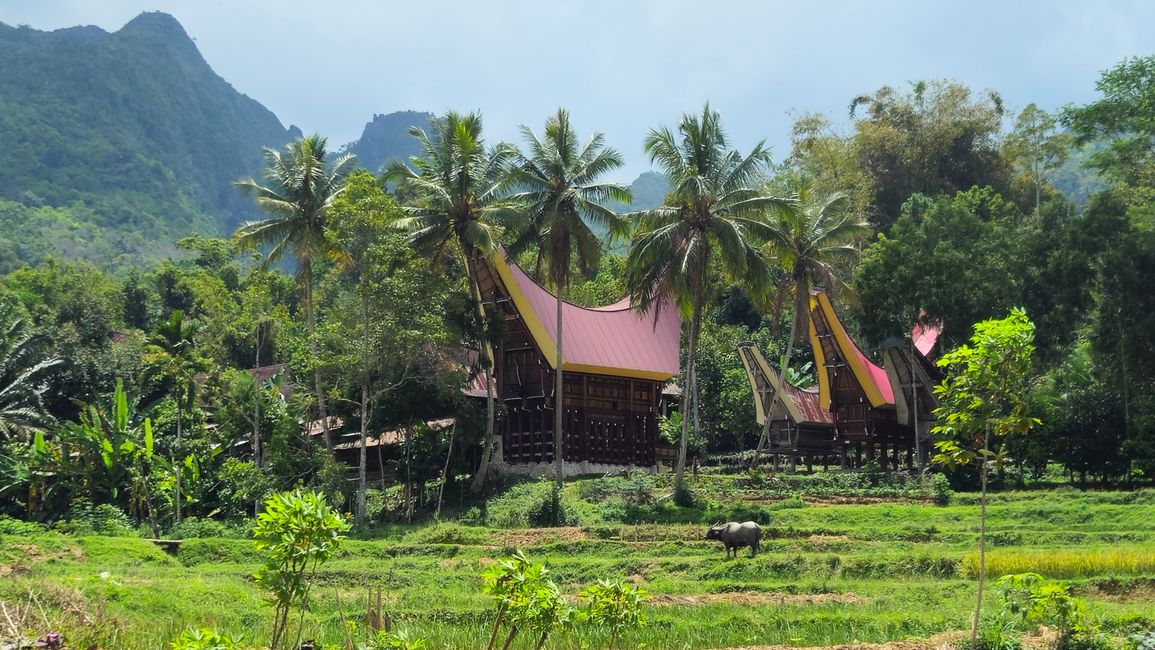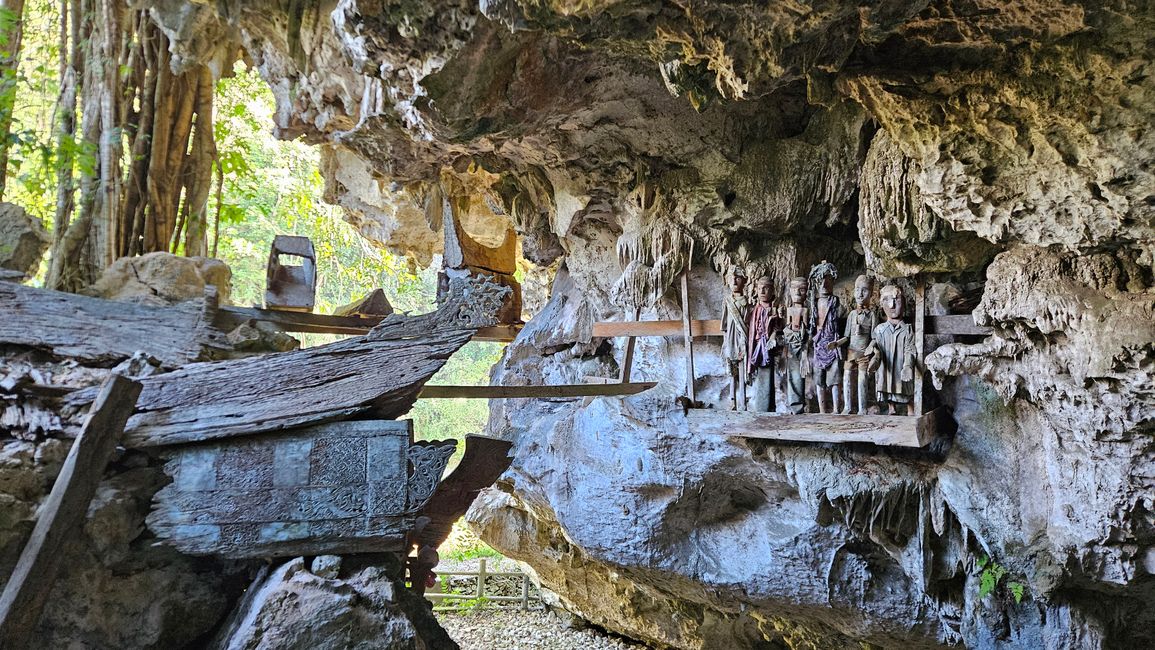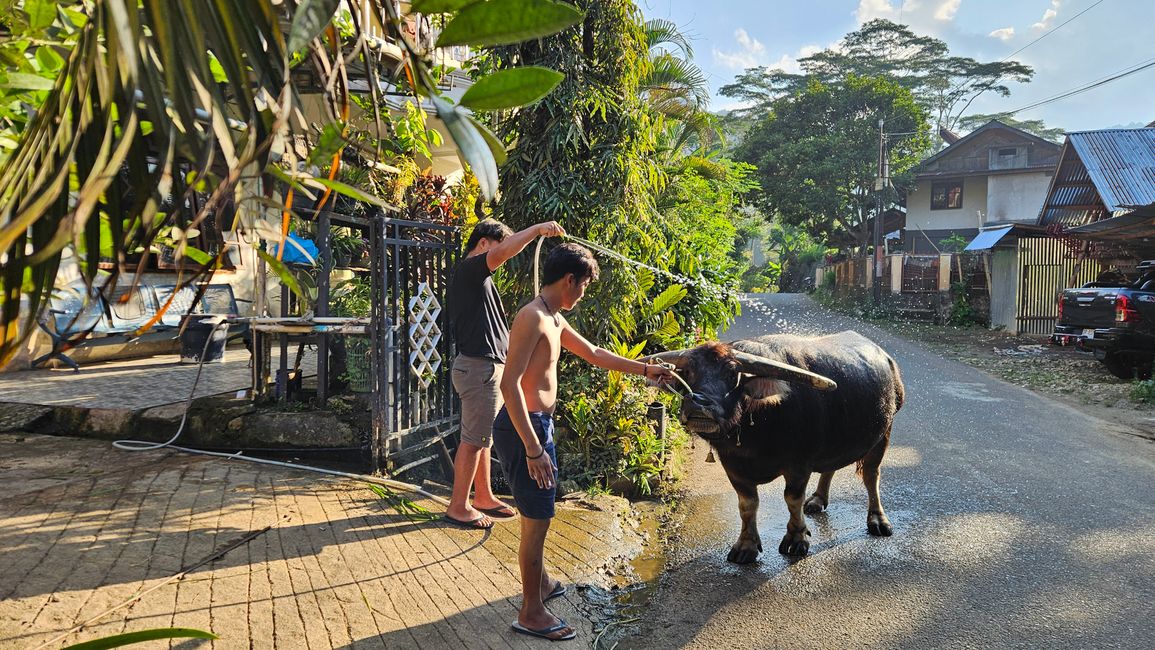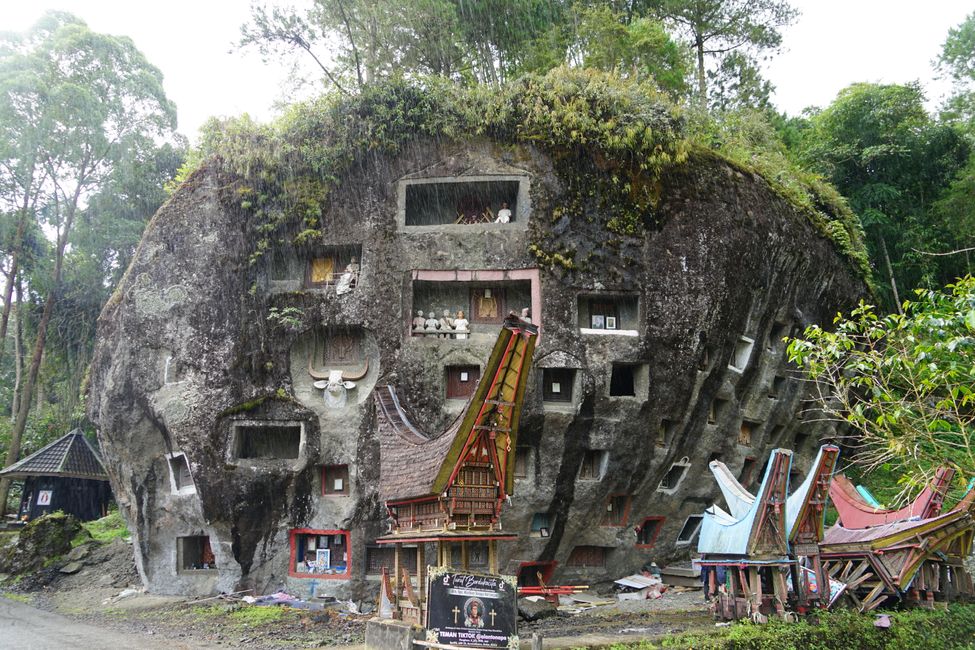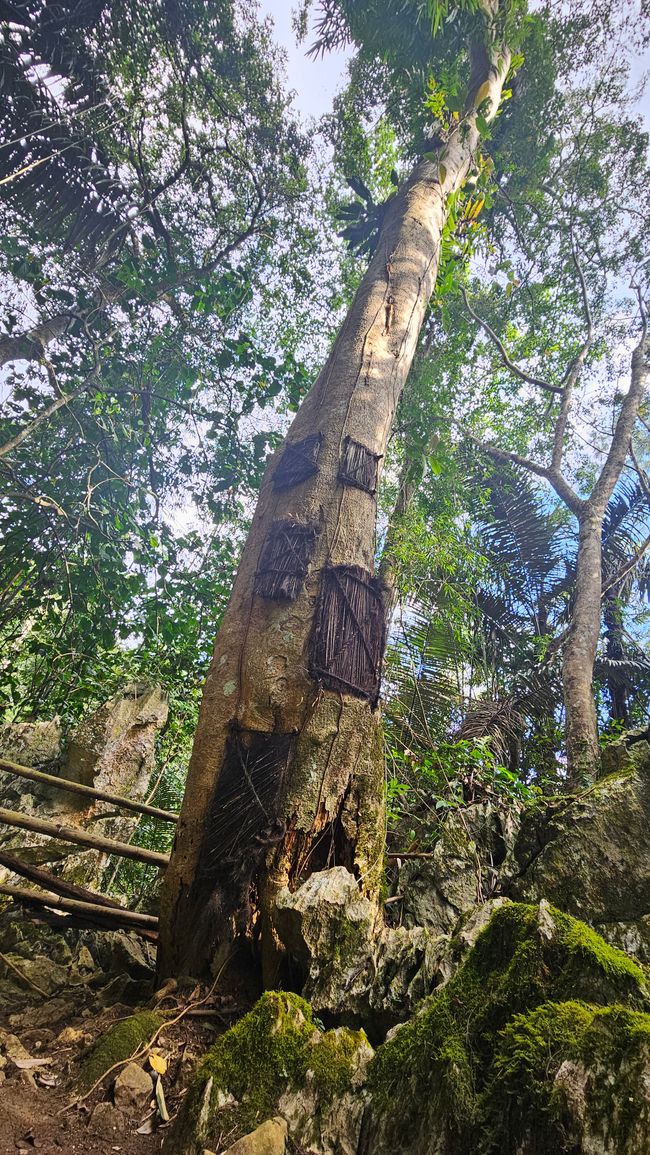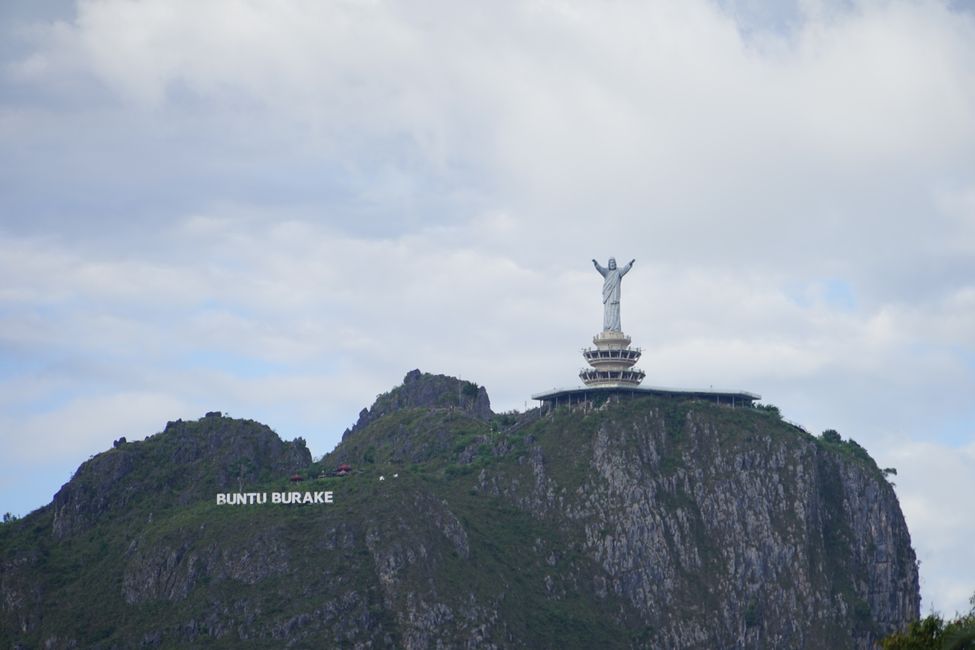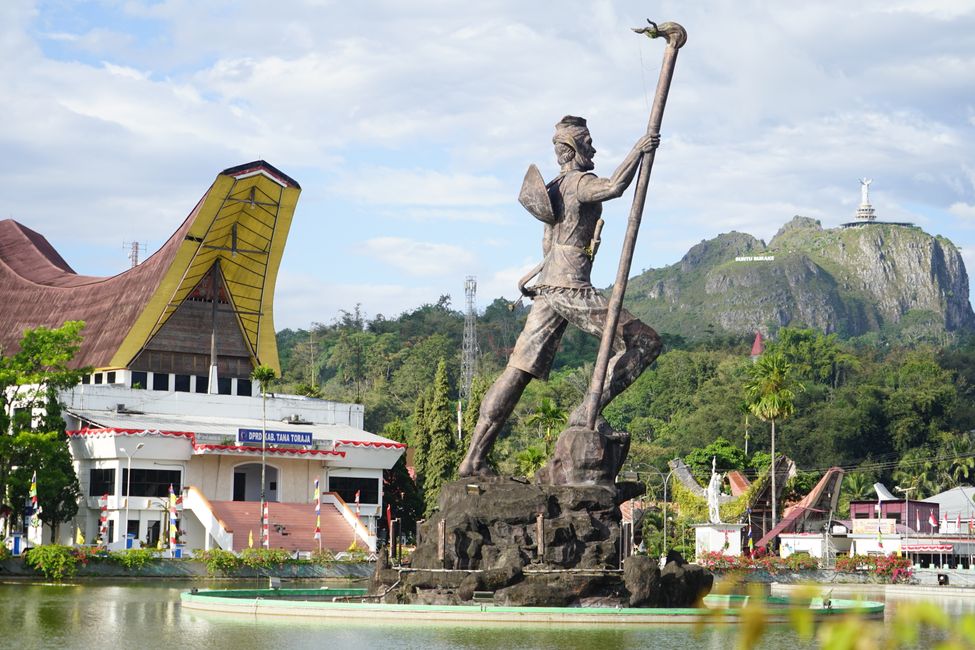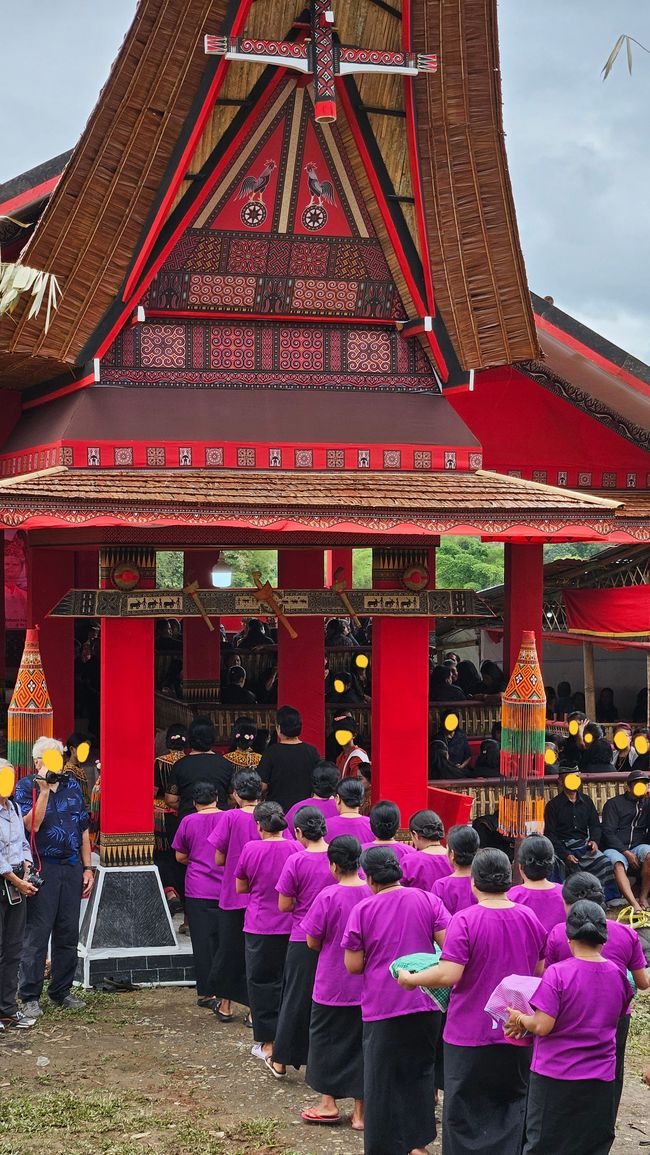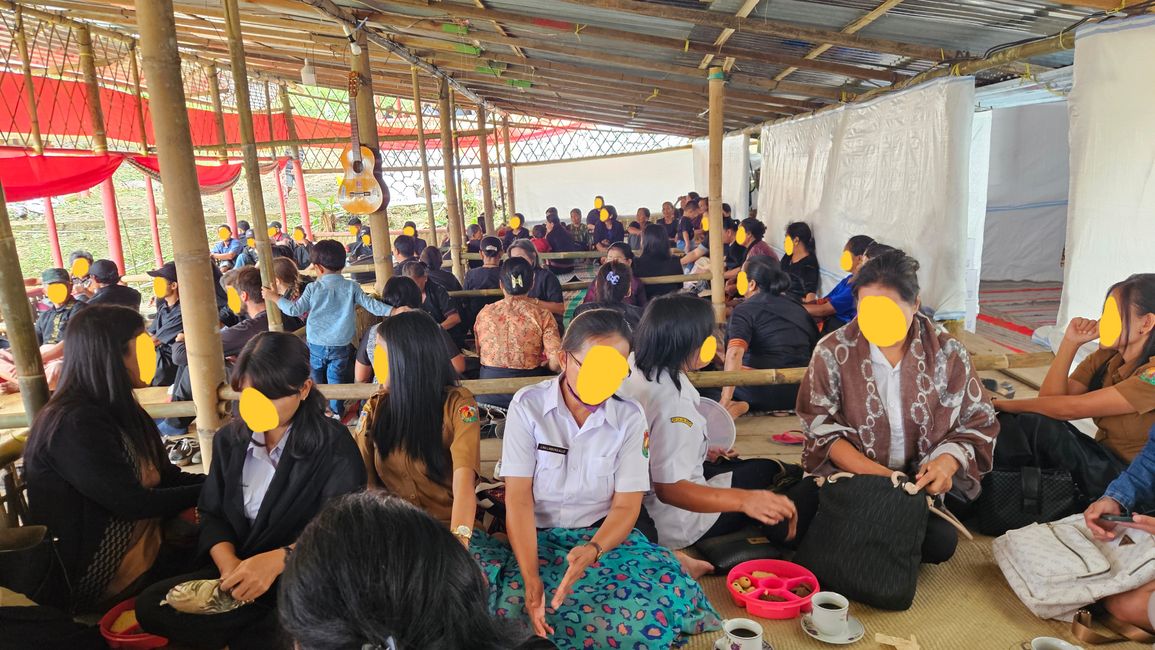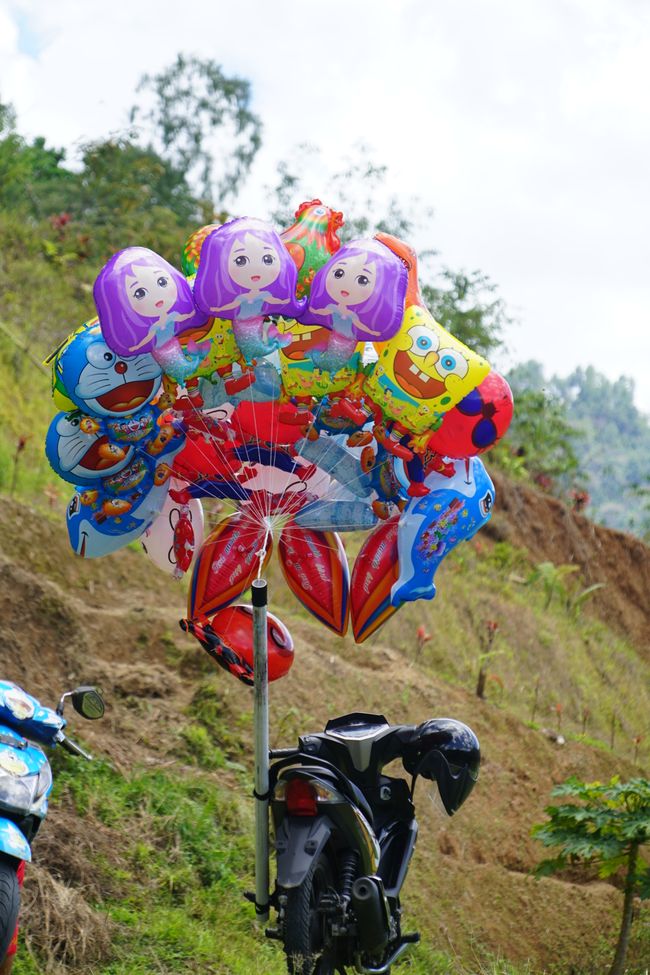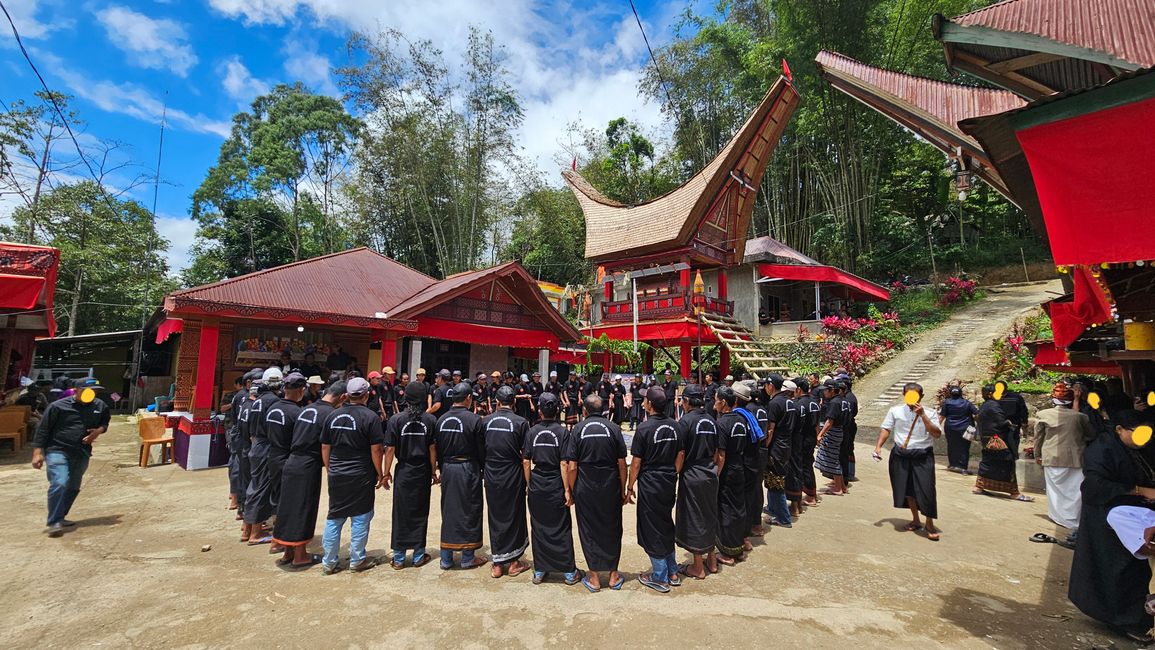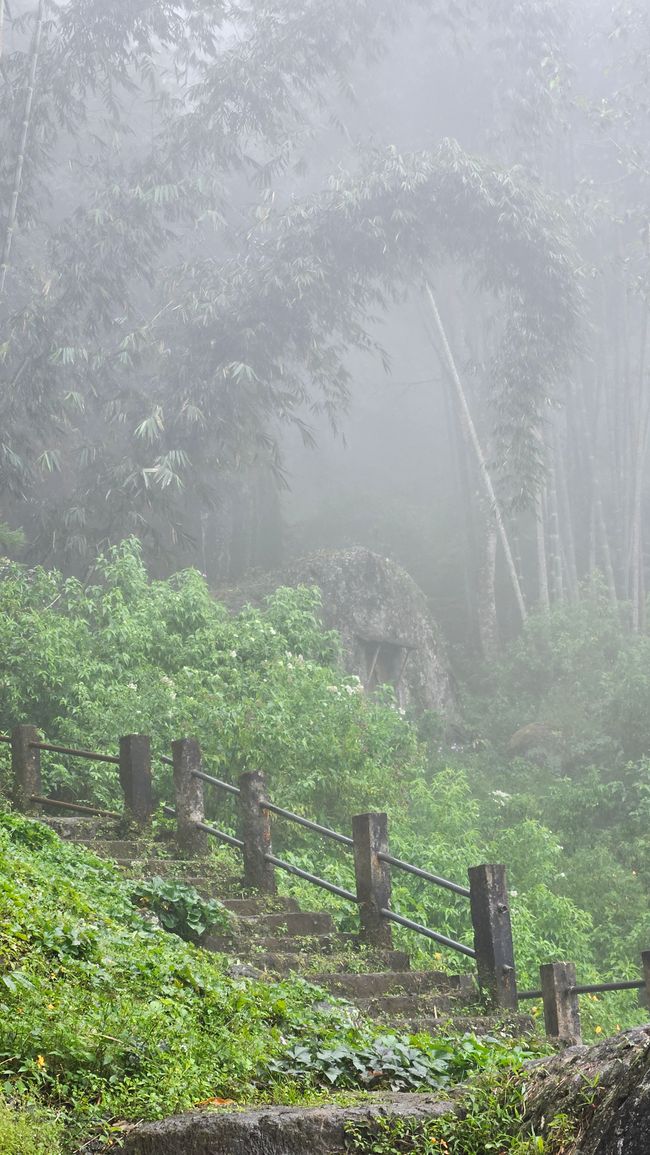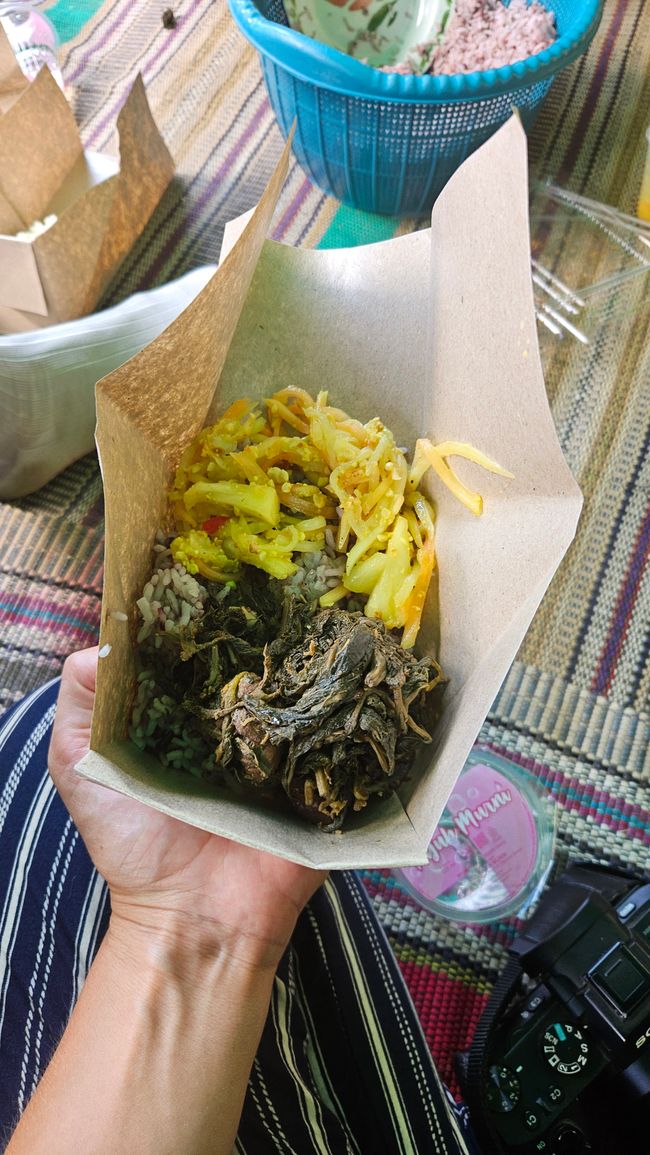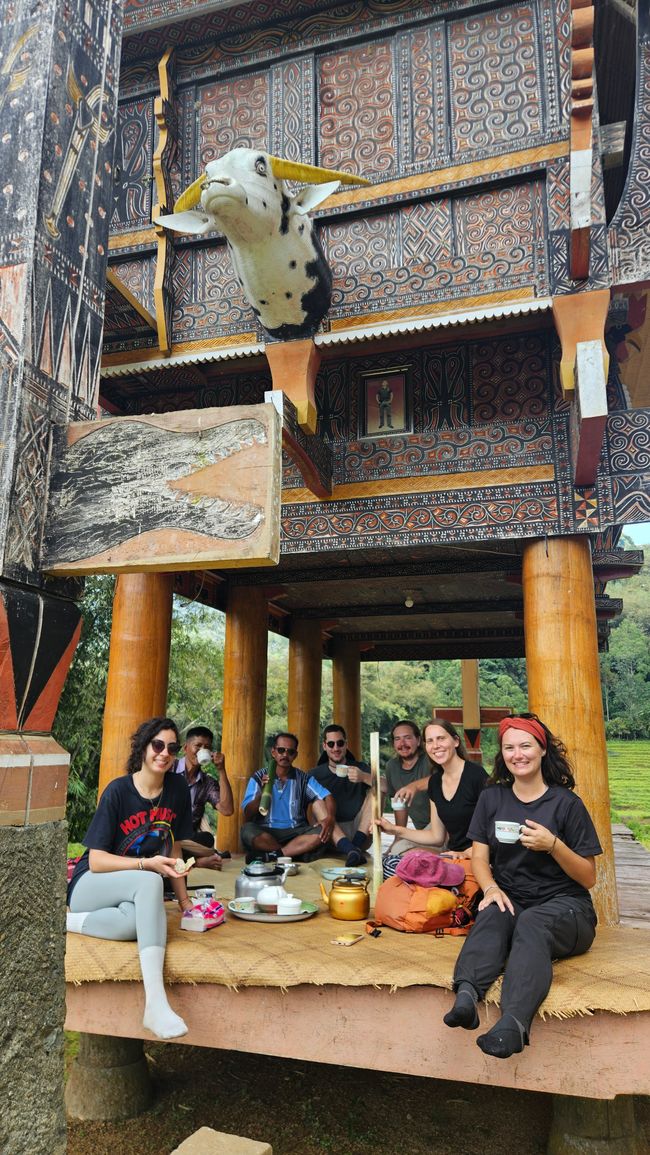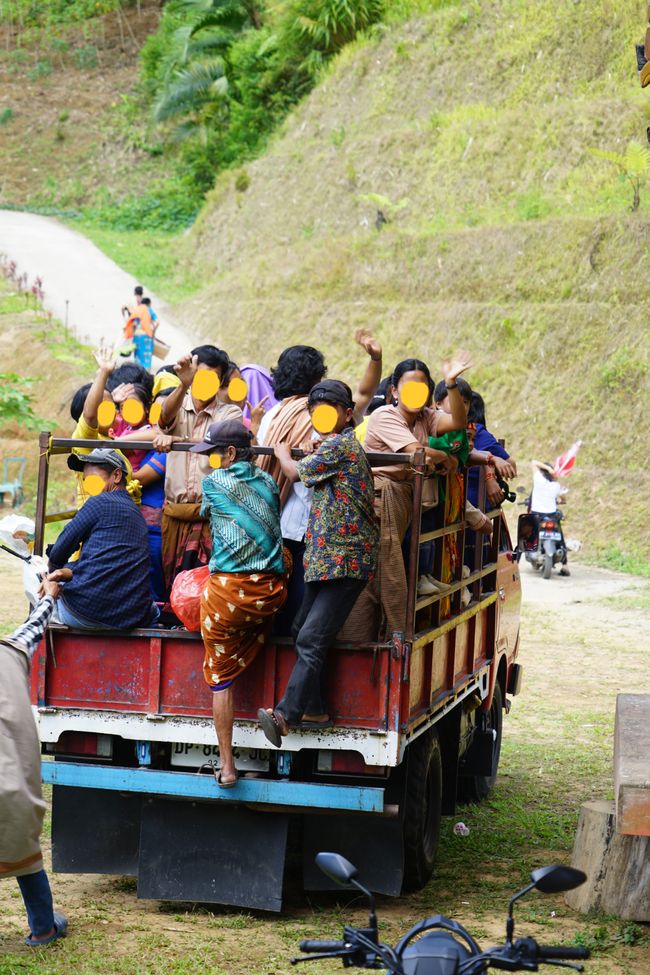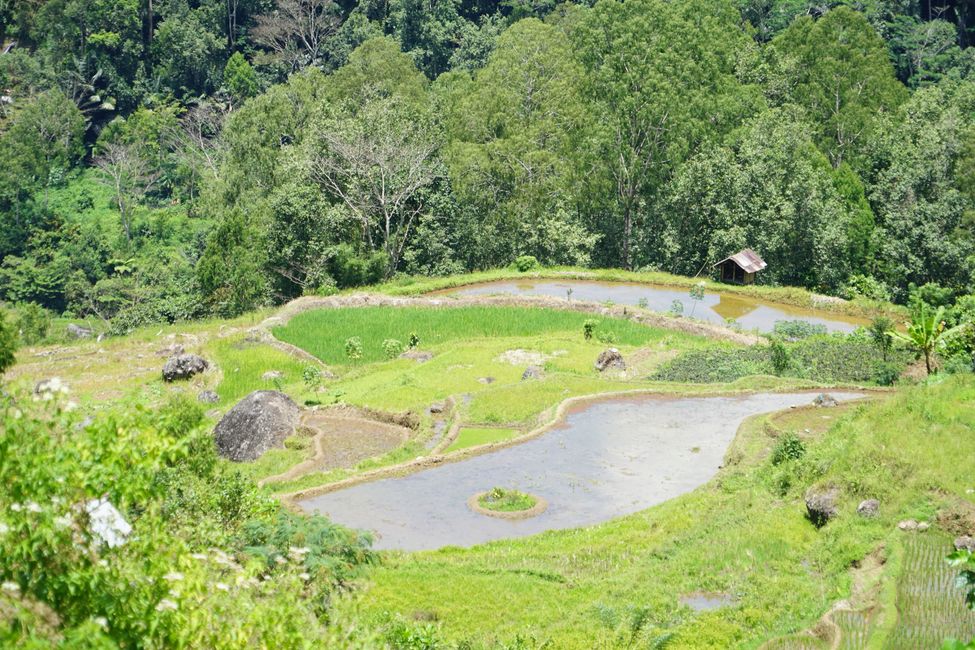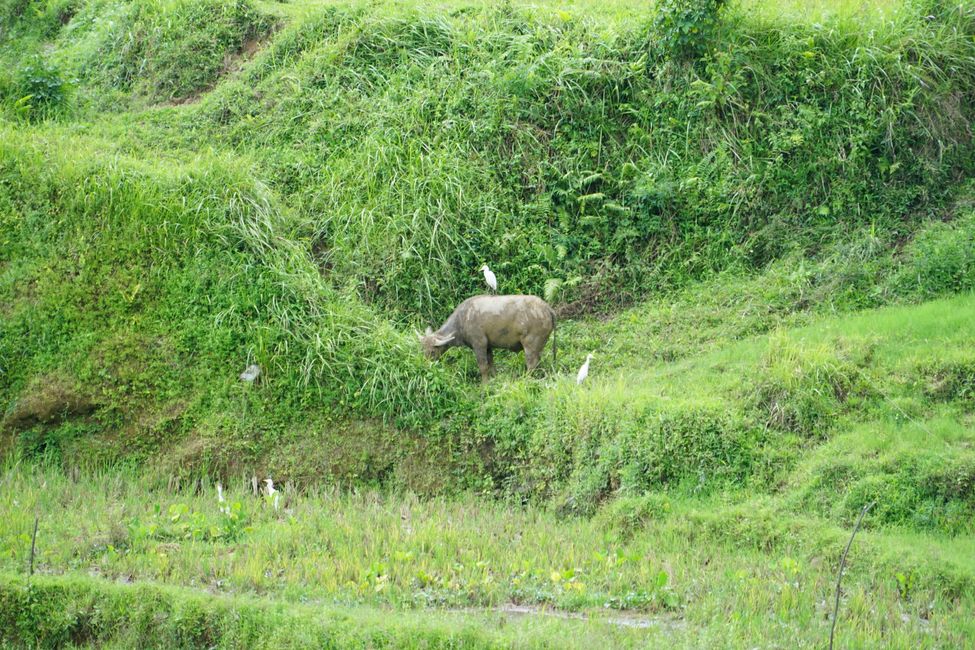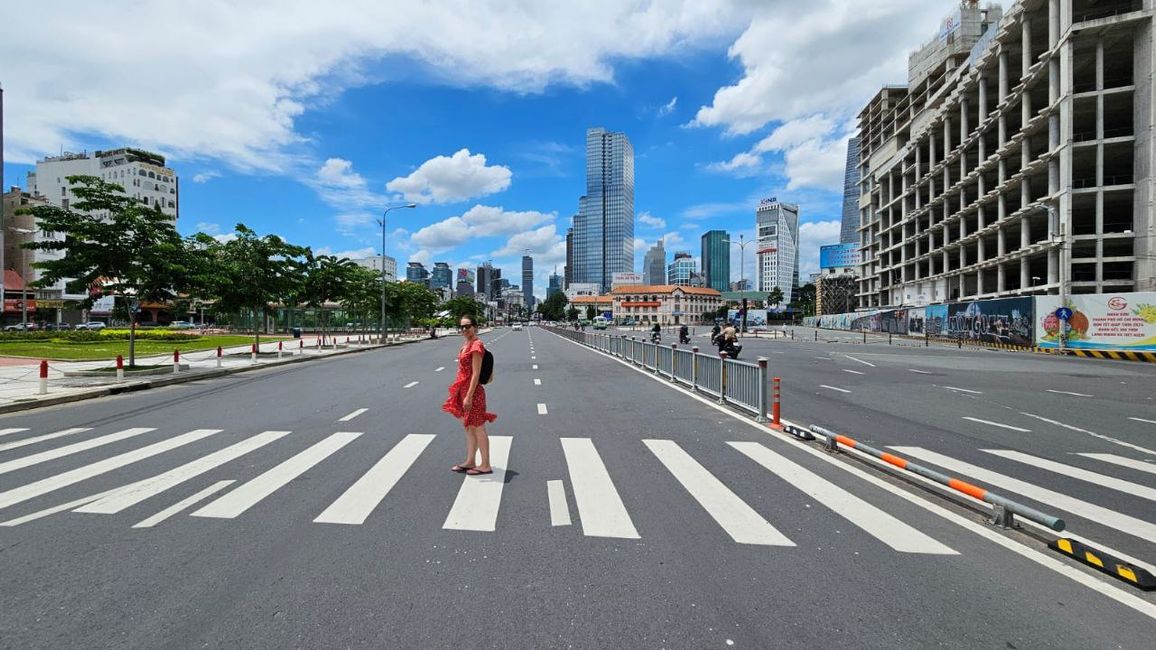
clara-marie-in-der-praerie
vakantio.de/clara-marie-in-der-praerie
Tana Toraja
Çap edildi: 03.10.2024
Habar býulletenine ýazylyň
Tana Toraja is the area where the Toraja people live. It is often associated with houses that have roofs resembling boats, as well as a unique ancestor worship. After Charlotte, Aaron, and I arrived in Tana Toraja early in the morning around 6 AM by night bus from Rammang Rammang, and Lynda took us to her beautiful homestay, Villa Luna, we were even able to check into our rooms immediately. Unfortunately, I couldn't fall back asleep, so I decided to go for breakfast. And that was a good decision because I met Melany and Etienne as well as Khaoula and Antoine, two couples from France, with whom I spent the next few days.
On the first day, we took a scooter tour together and visited Ke'te Kesu', Tampang Allo, Suaya, and Buntu Burake. Ke'te Kesu' is a typical Toraja village, which, however, is no longer inhabited but only maintained for tourists. The place consists of two opposite rows of houses: facing north are the so-called Tongkonans (residential houses), which represent the women, and facing south are the so-called Alangs (rice granaries), which represent the men. The number of buffalo horns hung on the front gables of the Tongkonans and the number of Alangs are considered signs of the family’s wealth. Moreover, the Tongkonans are also a marker of identity for every member of the Toraja people, as their home and family are wherever their Tongkonan stands.
When a family member dies, they are honored in a multi-day funeral ceremony, during which dozens of pigs and several water buffalo are sacrificed. Until the funeral ceremony, the deceased person - referred to as the 'Sick Person' - is treated with formalin and displayed at home, as it can take several years, depending on social status and the associated expectations for a grand ceremony, for this to take place. Caves and rock graves serve as burial sites, which are cleaned once a year during the Ma'Nene festival. As part of this, deceased family members are also taken out of their graves, dressed anew, and sometimes even carried through the village.
The Baby Graves are special tree burials for babies without teeth in particularly resinous fig trees. In the belief of the Toraja, the resin of the trees nourishes the babies similar to breast milk. Additionally, these trees are capable of sealing the holes carved into the trunk for the burial within a few years. Therefore, the babies continue to grow with the trees.
In Ke'te Kesu', Tampang Allo, and Suaya, we viewed various cave and rock graves. In caves, there are sometimes so-called hanging graves, which, as the name suggests, hang on the cave walls. The coffins resemble boats, buffalo, or pigs and are estimated to be over 500 years old. Sometimes, Tao Tao stand at the railings of the cave and rock graves. These are intricately carved and dressed wooden effigies of the deceased, which unfortunately have mostly fallen victim to grave robbers.
Buntu Burake is the Savior statue on a hill northeast of Makale, the district capital of Tana Toraja. With a total height of 40m, it is the landmark of Makale and the largest statue of Christ in the world. When we drove up to the hill in the early evening, the statue stood bathed in the light of the slowly setting sun. It looked really stunning!
On the next two days, we were accompanied by the local guide Yohanis (for anyone who wants to go there and needs a guide: +62 852 3685 3571). He took us to a funeral ceremony and went on a hike through the rice fields with us. We were there on the second day of the ceremony, called 'Receiving of the Guests'. Every guest brings gifts, which are carefully recorded so that a similarly valuable gift can be brought when a family member of the guest dies.
Yohanis had told us that we could bring gifts in the form of tea, sugar, and cigarettes (we decided against cigarettes, but sugar is actually similarly unhealthy...). Many guests brought pigs, and some brought water buffalo, which would be sacrificed during the ceremony. When we arrived, we were welcomed with tea and cookies and were able to look around a bit before moving on to lunch.
On the day of 'Receiving of the Guests', traditionally two water buffalo and several pigs are sacrificed. The first water buffalo was already being cut up when we arrived, and after the tea, pigs were slaughtered all over the premises, the skin burned with a burner and then cut up. One could hardly look away and was constantly reminded of the smell of burnt protein... Not for the sensitive!
The big goal for the next day was a small place in the rice fields where a harvest festival was being celebrated. We arrived just in time for lunch with rice and chicken that had been cooked in bamboo tubes. It tasted very, very good! Afterwards, Yohanis introduced us to a man whose father had been waiting for their ceremonies for seven years and whose brother had been waiting for six months. We were allowed to visit the two Sick People, which felt rather surreal: They were lying in a room in their coffins, which were opened just for us, next to them was another family member lying on the floor asleep, and we were even allowed to take pictures. That would be unimaginable in our society.
The next day, I continued my journey a bit wistfully. On the one hand, I was beginning to long for a break, but on the other hand, Lynda is such a wonderful host!
Habar býulletenine ýazylyň
Jogap
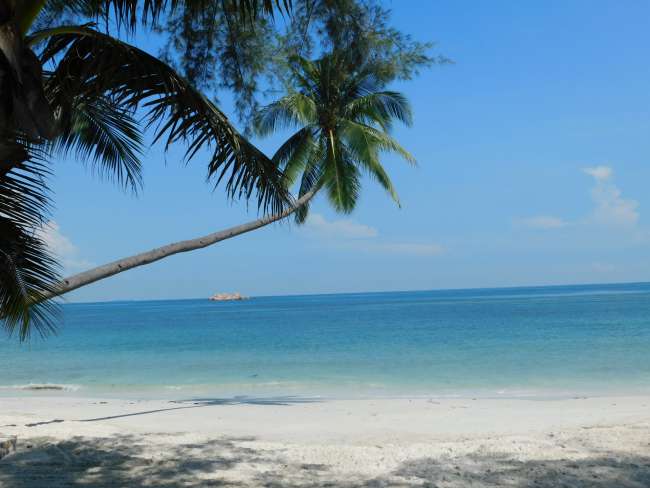
Syýahat hasabaty Indoneziýa
